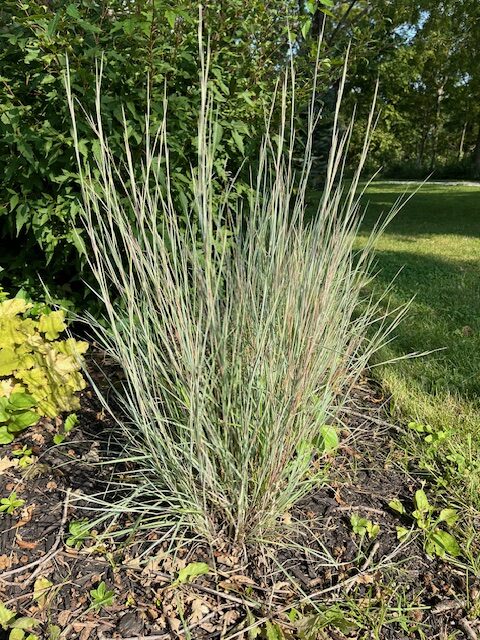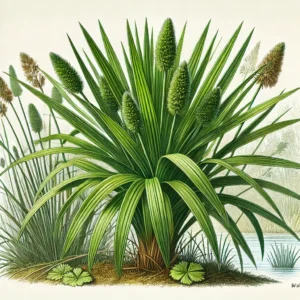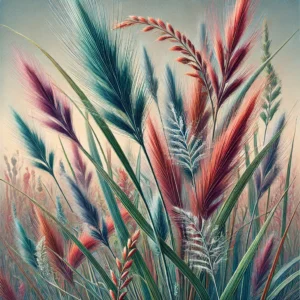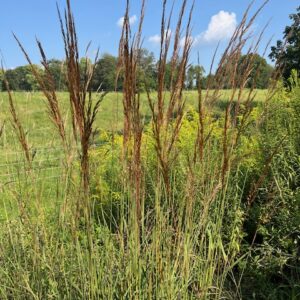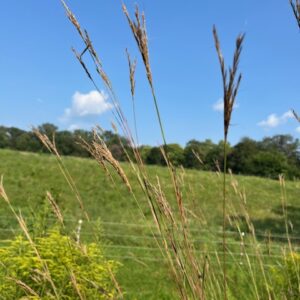Little Bluestem (Schizachyrium scoparium) is a native North American grass known for its role in prairies, savannas, and meadows. It’s appreciated for its beauty, ecological value, and versatility. Little Bluestem is a valuable plant for adding beauty and ecological benefits to landscapes. Its adaptability, seasonal interest, and role in supporting wildlife make it a popular choice for sustainable gardening and restoration projects.
Appearance:
Height: Typically grows 2 to 4 feet tall, although it can occasionally reach up to 5 feet in ideal conditions.
Leaves: Narrow, linear leaves that are usually 1/8 to 1/2 inch wide. They are blue-green in the summer and turn shades of red, orange, and bronze in the fall, providing seasonal interest.
Flowers: Produces delicate, airy flower spikes that are initially greenish and turn reddish-brown as they mature. The seed heads are feathery and arranged in loose, open clusters.
Seed Heads: Characteristically fluffy and turn a striking tan color in late summer and fall. They are visually appealing and persist into the winter.
Habitat:
Range: Native to North America, commonly found in the central and eastern United States and Canada. It is a key species in the Great Plains and other prairie regions.
Soil: Prefers well-drained soils, including sandy, loamy, and clayey types. It thrives in soils that are somewhat dry to moderately moist.
Climate: Adaptable to a range of climates but is particularly suited to temperate regions with cold winters and hot summers. It is drought-tolerant once established.
Ecological Role:
Wildlife: Provides habitat and food for a variety of wildlife. The seeds are eaten by birds, and the dense growth offers cover for small animals.
Pollinators: Attracts pollinators such as bees and butterflies, though it is less showy than some other flowering plants in this regard.
Erosion Control: Its deep root system helps prevent soil erosion and is valuable for soil stabilization in restoration projects.
Uses:
Landscaping: Used in native plant gardens, prairie restorations, and as a backdrop in mixed borders. It adds texture, color, and movement to garden designs.
Aesthetic: The changing colors of the foliage and the attractive seed heads make it a visually appealing addition to gardens throughout the growing season and into winter.
Conservation: Commonly used in prairie and grassland restoration projects. It helps reestablish native plant communities and supports ecosystem functions.
Livestock: Sometimes used as forage for livestock, though it is not as commonly utilized as some other forage grasses.
Cultivation Tips:
Planting: Sow seeds directly into the garden or prairie area after the last frost or start indoors and transplant after the risk of frost has passed. Space plants about 12 to 18 inches apart to allow for their mature growth.
Sunlight: Requires full sun to thrive. Aim for at least 6 to 8 hours of direct sunlight per day.
Watering: Drought-tolerant once established. Water regularly during the establishment phase but reduce watering as the plant matures.
Maintenance: Low-maintenance. It generally requires little care beyond occasional weeding and watering during dry periods. It benefits from periodic division to maintain plant vigor.
Considerations:
Invasiveness: Little Bluestem is not typically invasive but can spread rapidly in favorable conditions. It’s important to manage its growth to prevent it from outcompeting other plants in garden settings.
Pests and Diseases: Generally resistant to pests and diseases. Regular monitoring helps catch any issues early, but it is typically hardy and low-maintenance.

